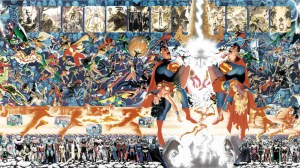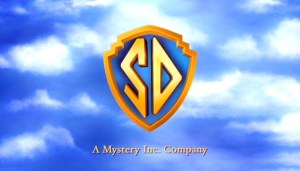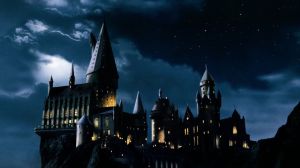The New History of the DC Universe is one of the best part of DC’s publishing line at the moment, and that’s saying something. DC Comics is on fire right now, and with the new fans coming in from Superman‘s success, it makes sense that the publisher would want to give new readers a way to make sense of the tangled continuity of DC Comics. Since Crisis on Infinite Earths, the history of DC has changed multiple times. The most ironic part of these changes is that they often just bring things back to the pre-Crisis universe, starting with Infinite Crisis (itself part of the 20th anniversary of Crisis.) However, after basically bringing back the pre-Crisis continuity throughout the ’00s, DC blew it all up with Flashpoint, creating the New 52.
Videos by ComicBook.com
The New 52 is the most maligned DC continuity change. While there’s definitely some great comics from this period, it was overall rather disliked, and the canonicity of its events have been dropped more and more. The outstanding The New History of the DC Universe #1 mostly picked events from pre and and post-Crisis continuity to canonize, so it was a huge shock when The New History of the DC Universe #2 revealed the origin of the Justice League. In their first appearance in The Brave and the Bold #28, they battled Starro the Conqueror, and this was the canon (with changes like Black Canary being there instead of Wonder Woman.) However, The New History of the DC Universe #2 establishes that the New 52 beginning of the Justice League is actually the canon, which is a very interesting, yet weird, change.
The Justice League’s First Battle in the New 52 Was Against Darkseid

So, Justice League, by Geoff Johns and Jim Lee, was the flagship book of the New 52. It’s first story arc, titled “Orgin,” told the story of the Justice League coming together for the first time, five years before the events of the rest of the New 52 first issues (except for Grant Morrison and Rags Morales’s Action Comics, which also took place in the past and is the cream of the New 52 crop.) It showed the first meeting of Superman, Batman, Wonder Woman, Green Lantern, the Flash, Aquaman, and Cyborg, who replaced Martian Manhunter in the Big Seven League during the New 52. Working together, they foiled an invasion by Darkseid and his forces, battling the Lord of Apokolips. This was quite different from the previous origin of the Justice League. Originally, Starro the Conqueror attacked Earth, and Green Lantern, Flash, Aquaman, Martian Manhunter, and Wonder Woman came together to battle the powerful alien starfish, with Superman and Batman joining the team not long after. This was changed in the post-Crisis DC universe because Wonder Woman hadn’t left Themyscria at that point. Instead Black Canary II, the daughter of the Justice Society member Black Canary I, was one of the founders of the League. The New History of the DC Universe writer Mark Waid, working with co-writer Bryan Augustyn and artist Barry Kitson, told the story of post-Crisis Justice League’s origin in the excellent JLA: Year One.
One would assume that Waid, a creator who is known for his love of Silver Age DC, would have kept the original origin of the Justice League, but instead, he goes with the New 52 one. He still keeps the battle against the Appellaxians as the League’s second mission, but he also keeps Cyborg as one of the founders of the League. However, Cyborg doesn’t stay with the team after the battle against Darkseid, like he did in the New 52, being put into hibernation and Martian Manhunter taking his place. This allows Cyborg to be a founder of the Justice League and also keeps his history with the New Teen Titans.
These are some major changes to DC canon, but if I’m being honest, they’re also the best way to do it. To begin with, Cyborg’s powers are way cooler in the New 52 universe — he bonded with a Mother Box from Apokolips during the invasion and his father helped him understand what happened to him rather than creating his implants like in pre-New 52 DC — and it makes him a more important hero while also keeping the classic New Teen Titans in canon. The Justice League coming together against Darkseid also gives the God of Evil a more important place in the canon than he had before. Seeing as how Darkseid has been pushed as DC’s Thanos, this is a good thing. It keeps Martian Manhunter in the League, a change that a lot of diehard fans didn’t love. Finally, it helps DC fans from outside of the comics who have watched both the DCAU version of “Origin” and the DCEU Justice League films walk into a more familiar DC Universe.
What Else From the New 52 Will Become Canon?

One of the biggest factors in DC’s recent successes, in my opinion at least, has been shelving the vast majority of the New 52’s ideas. Let’s be real — the New 52 was bad. While there were some good parts of it, it wasn’t a great reboot of the DC Multiverse. However, I do find it quite interesting that The New History of the DC Universe #2 establishes the New 52 origin for the League.
This change works very well. As cool as the original battle against Starro was, the League’s first battle being against Darkseid fits much better. It is exactly the kind of threat that needs the Justice League and makes their debut more epic. However this also begs of the question of how many of the New 52’s events will become canon? I think every DC fan has some things from the New 52 they want canon and this change opens that up for readers.
The New History of the DC Universe #2 is on sale now.









